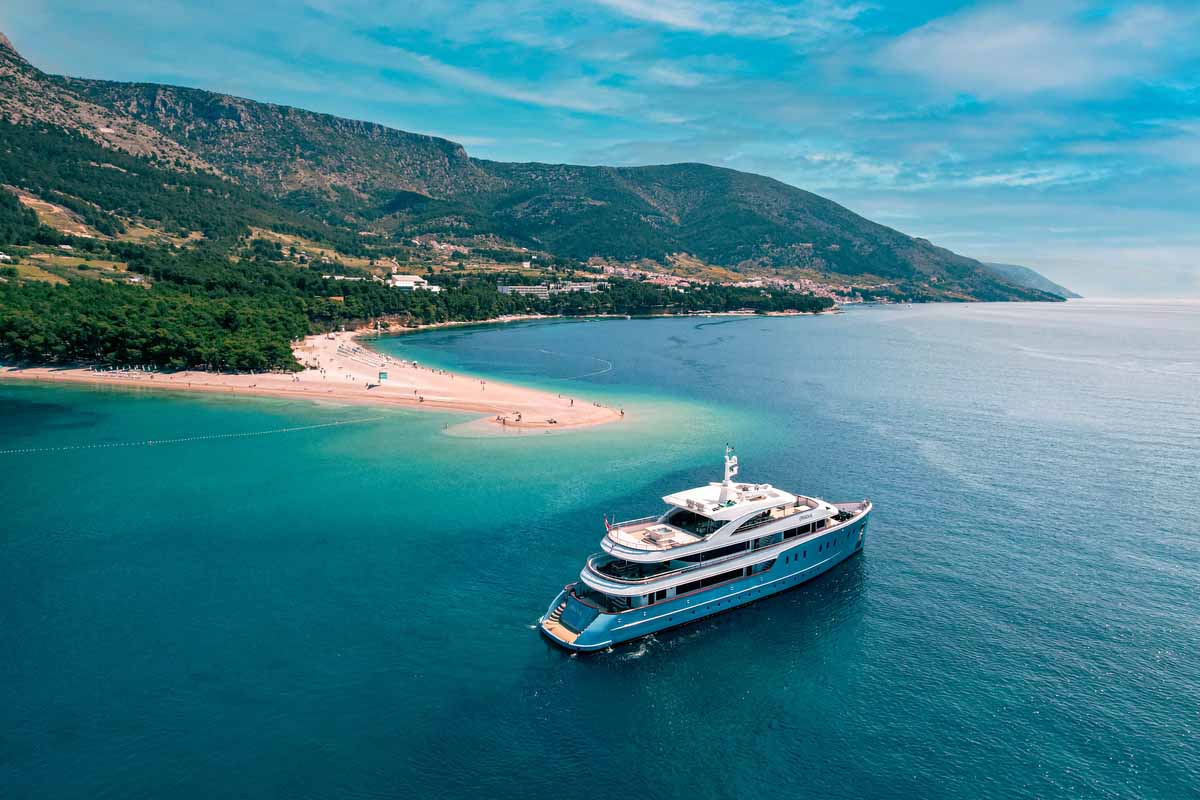
Explore the Croatian Adriatic’s unique shades of blue with Goolet.
Split, Saints and Superyachts
The city of Split was like a ruler laid on the seafront, a manmade copy of the crown of mountain rock that crested the city and the tight, crescent-shaped port. That was my view, standing mid-deck of a yacht in that port, when I heard a voice behind me.
“Anything else?” It was Branco, the ship’s steward. At first, I wasn’t sure what he meant. In one hand I had a gin and tonic, in the other, a plate of cheese and Dalmatian prosciutto. In the crook of my arm, I had a book of short stories, and sticking from my pocket was a pair of binoculars. Anything else didn’t seem possible.
I thought back to what a friend had told me about Croatian hospitality. Warm but simple, he’d said: a country of farmers and fishermen. “Think of it as going to your family. You’ll be treated well, but don’t expect any above and beyond.” That no longer seemed true; it was all above and beyond.
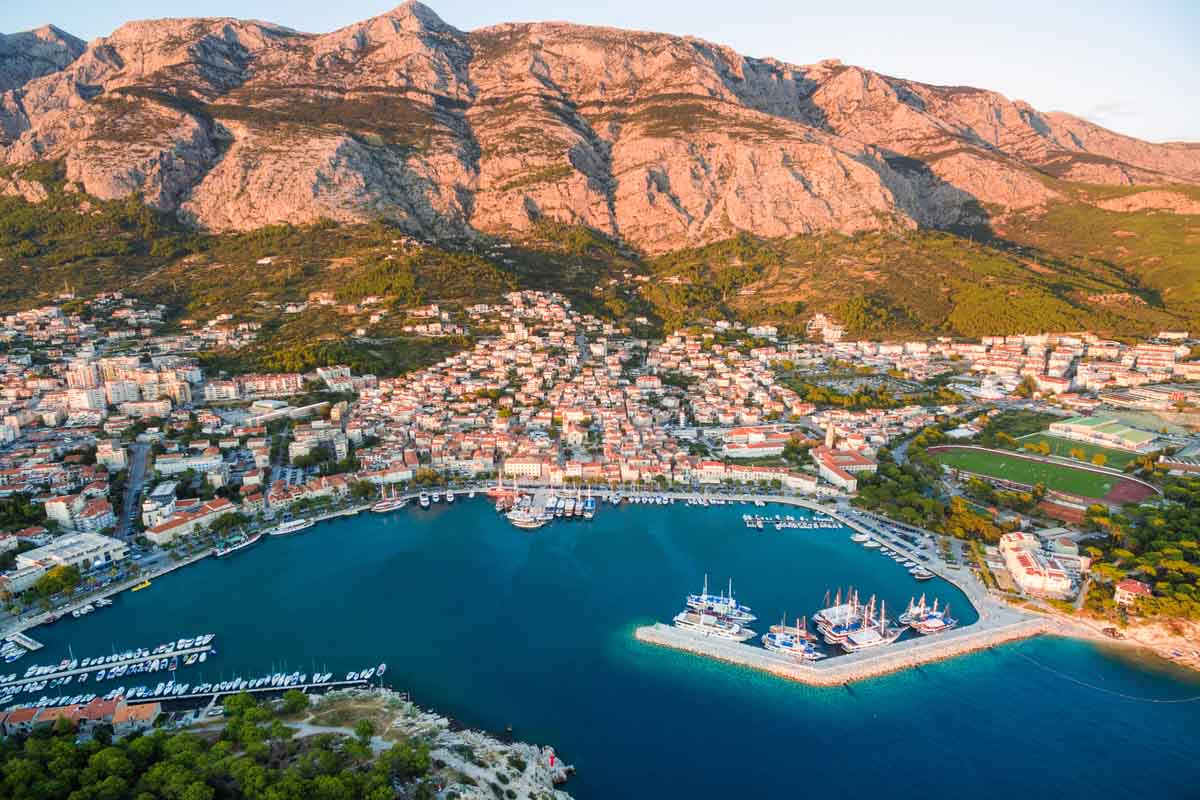
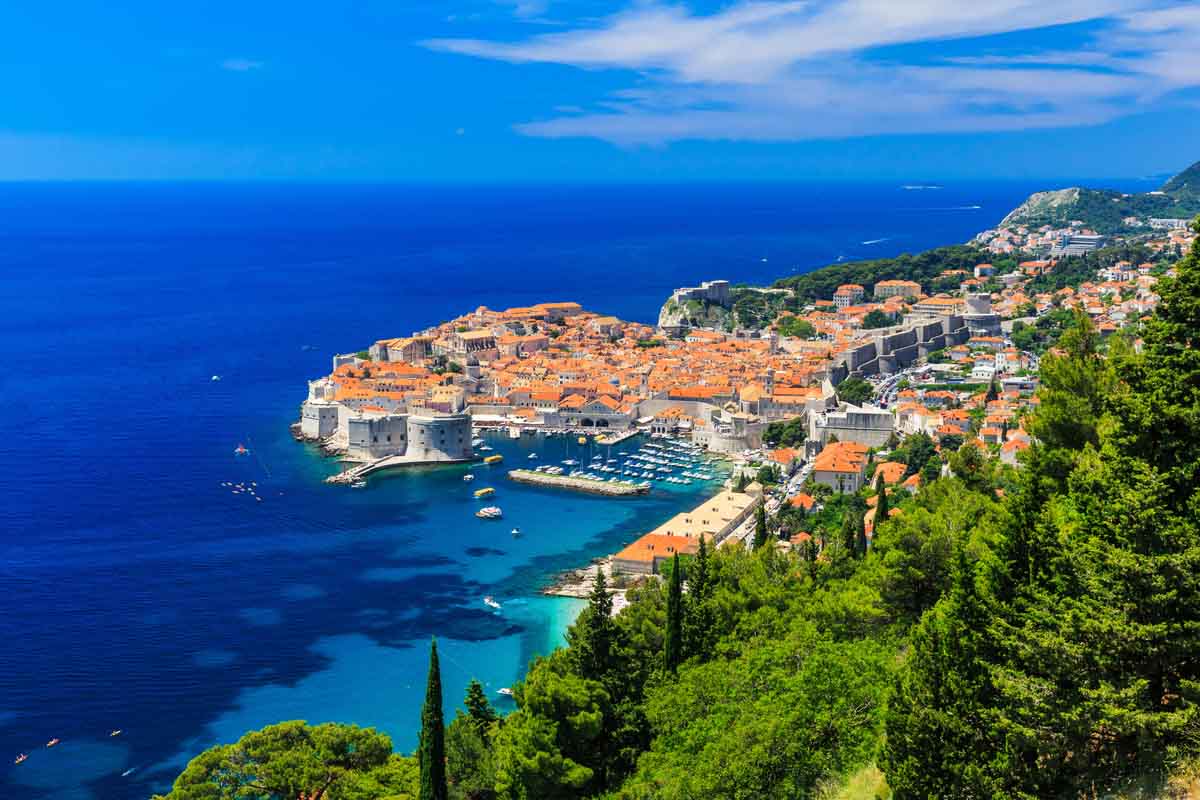
I was traveling on Ohana, a charter mini-cruiser owned and captained by Josip Šerka and chartered by luxury operator Goolets. The ship was 160 feet of steel hull, one of Goolet’s six new Dalmatico Super (DS) Yachts touring the Dalmatian Coast—slow cruising superyachts that serve more people while using less fuel. A recent refurbishment had streamlined her interior, leaving 14 cabins—with two master suites and a VIP stateroom—a cinema, a children’s playroom and a fresh coat of azure paint.
Typical of a Goolets charter, there was no set itinerary; we could go as we pleased. That meant an easy jaunt around the islands beyond Split, chasing the sun.
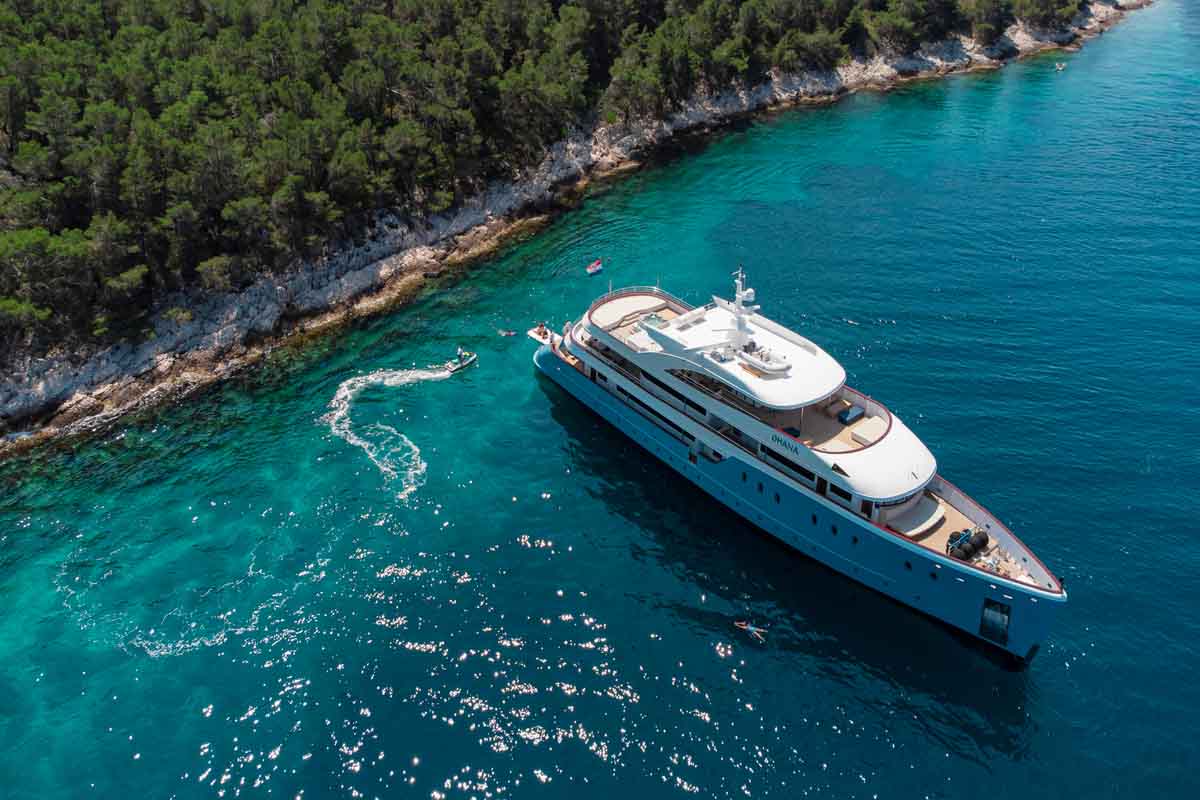
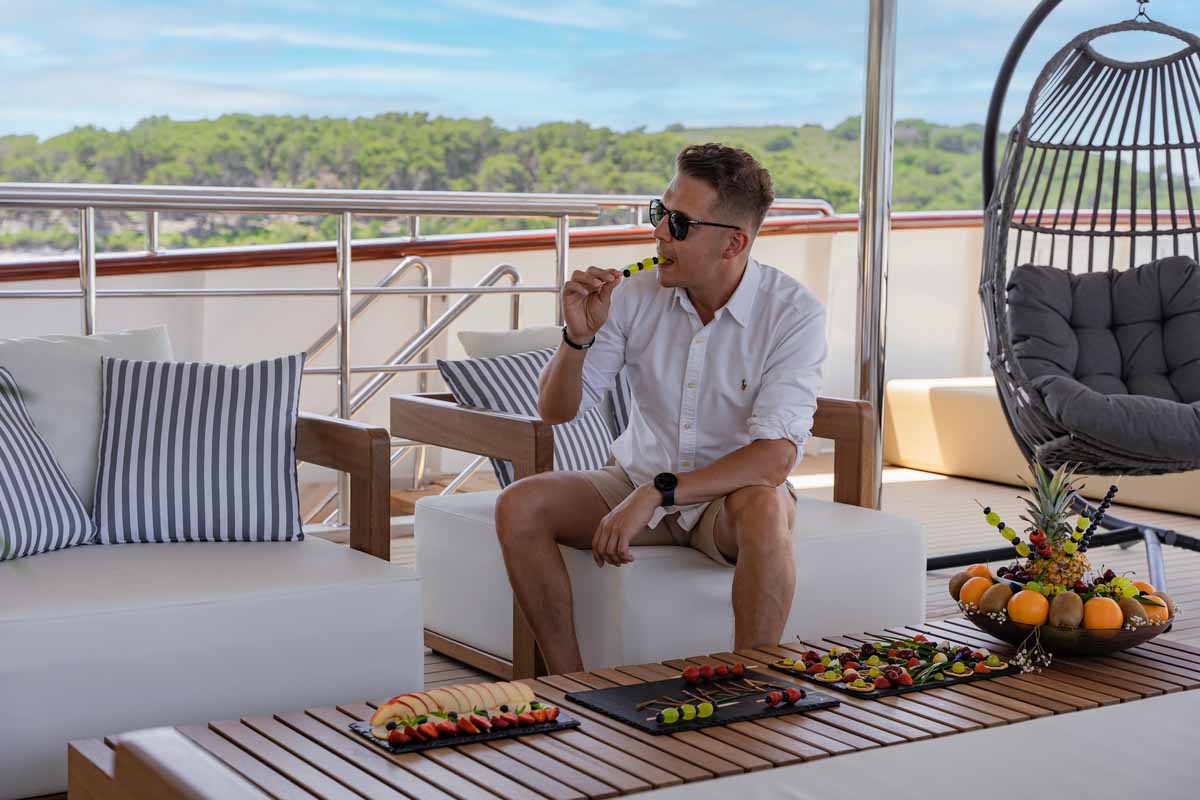
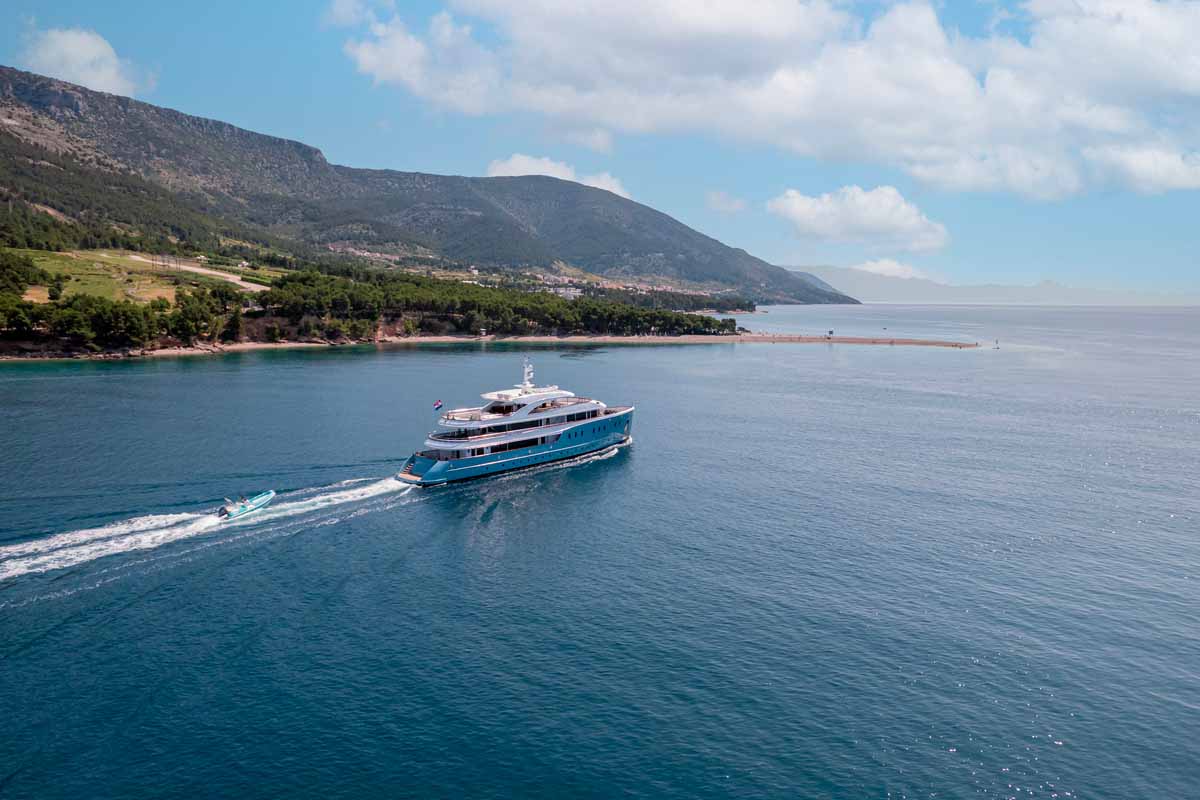
Branco’s offer was only a taste of what was to come that night—a dinner of tuna steak and Croatian white wine, and fifteen-year-old Speyside whisky on deck as the night fell. The wind had picked up—a white bora, Branco told me, that came from the mainland, and would bring clear skies the next day.
He was right. It was a bluebird morning as we passed through the Split gates. From out the plane window, the islands had had the look of pancake batter spilled from the ladle—golden and crusty-edged against the blue pan of the Adriatic. But now, beside them at sea level, they seemed so close to one another, the open sea came as a surprise. There is always land; one island, then another, and another, and then, beyond it all, the distant blue shadow of the mainland.
The island of Brač was lumpen and foreboding, pine grove on taupe rock, with long, looping roads cuts into the hillsides. Mostly they led to farms—orderly columns of olive trees and grape vines, oil and wine being the two products of Brač. Tiny farmhouses sprung into view from behind folds in the hills and terraced valleys. We passed the pencil-point of Zlatni Rat, an apricot pebble beach poking out into the turquoise water. In this sluice between Brač and Hvar, the wind could be wicked, and there were kite surfers taking advantage, rising with their kites, and whirling with their boards in the air.
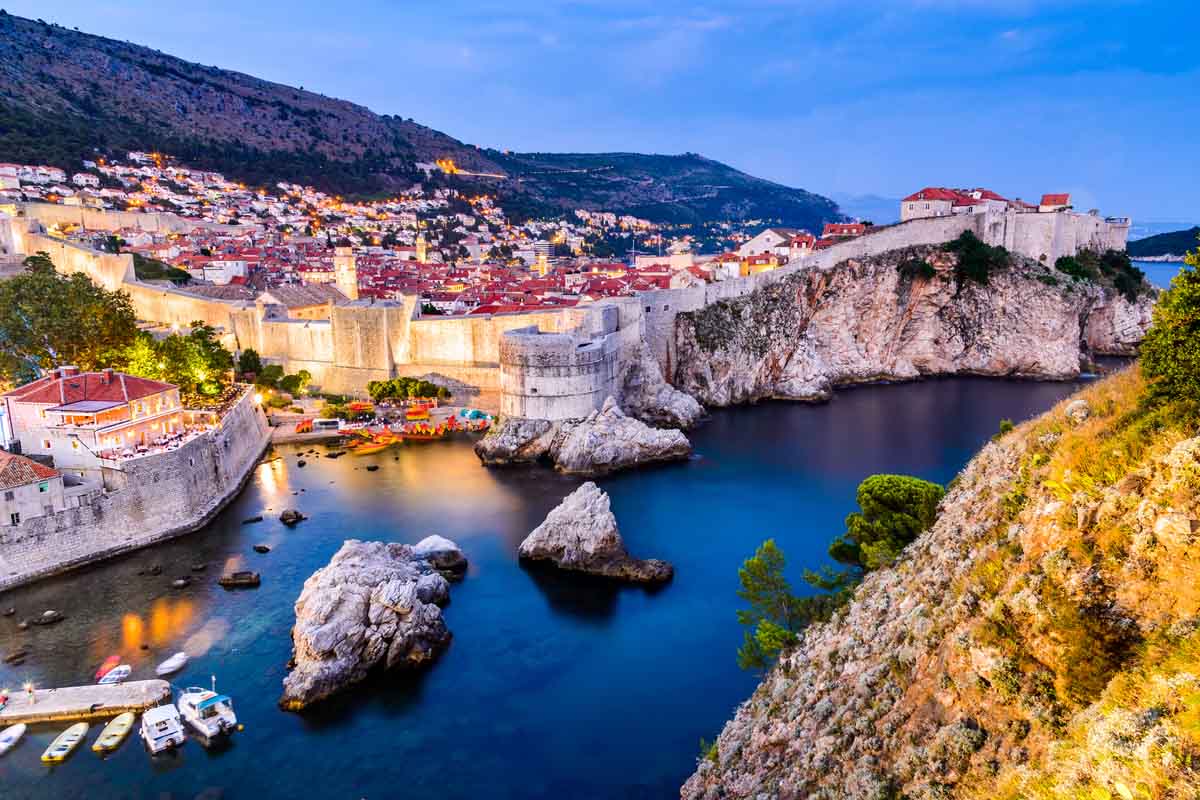
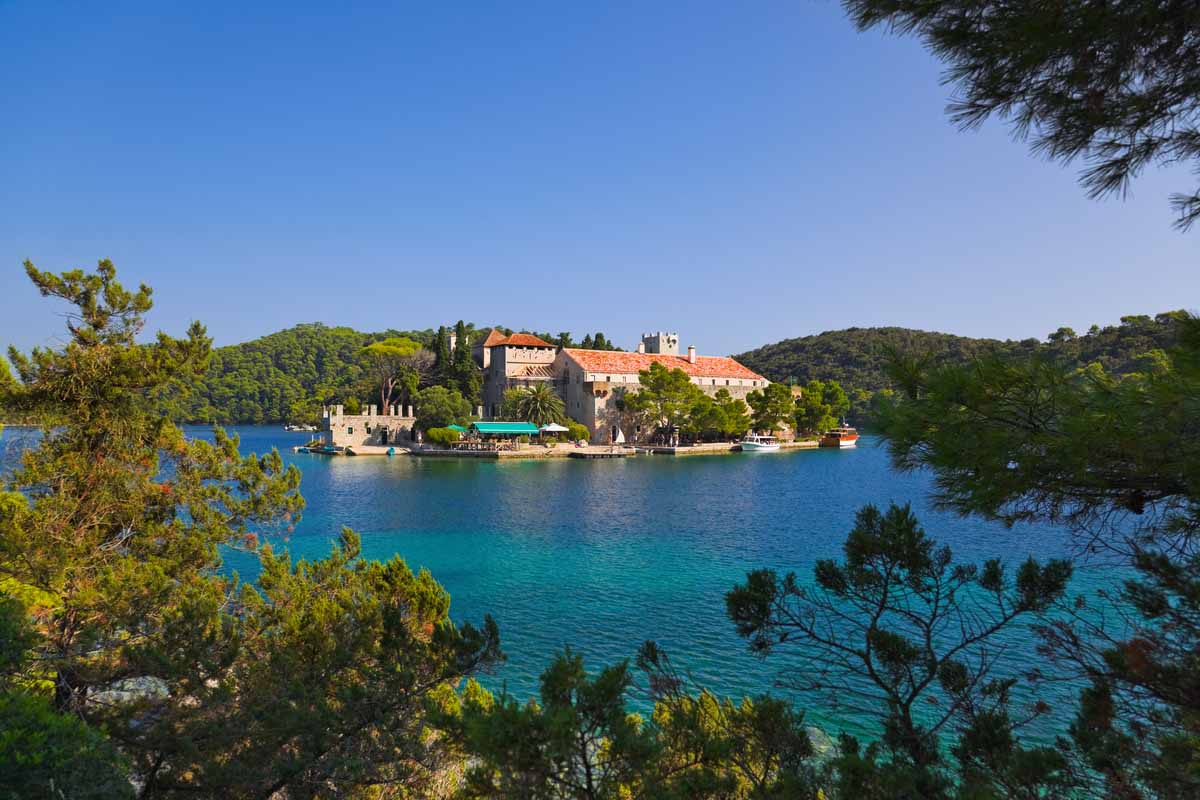
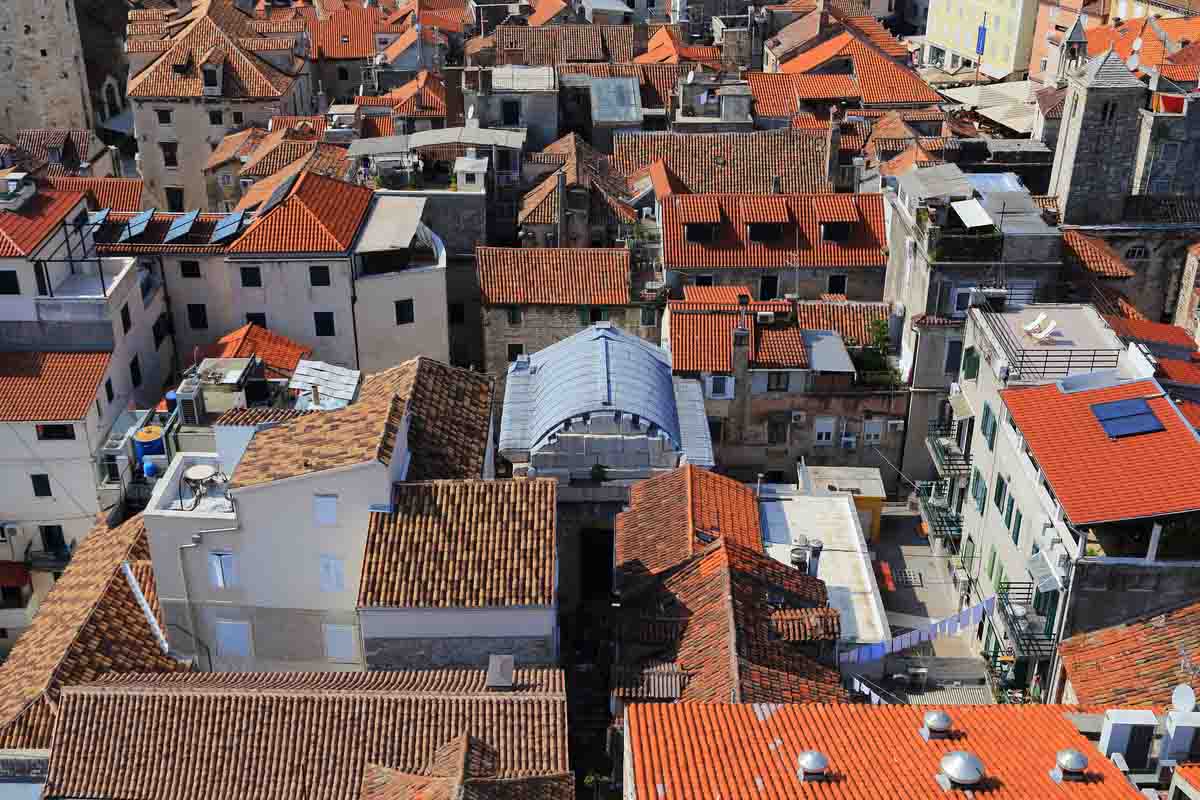
We anchored and took the dingy into Bol for some time ashore. After the evening on board, I was eager to stretch my legs, and there was just enough time to make the four-mile round trip to the top of Vidova Gora mountain. The noontime bells of the church were playing a galloping tune, and the smell of garlic and fried rice poured from open windows as I climbed up and out of the town. Striding past bluebells and poppies, I reached the summit. Below me were the banded hills of grey and olive green, and, at the shoreline, the nubbin of Zlatni Rat dotted with umbrellas and sunbathers.
Returning to the boat, lunch was, as always, hot and ready, the drinks cool and clinking. Slow-roasted pork belly, and large prawns cooked Buzara-style, in garlic and white wine. And Branco, quick with the ready bottle, attentive to the last.
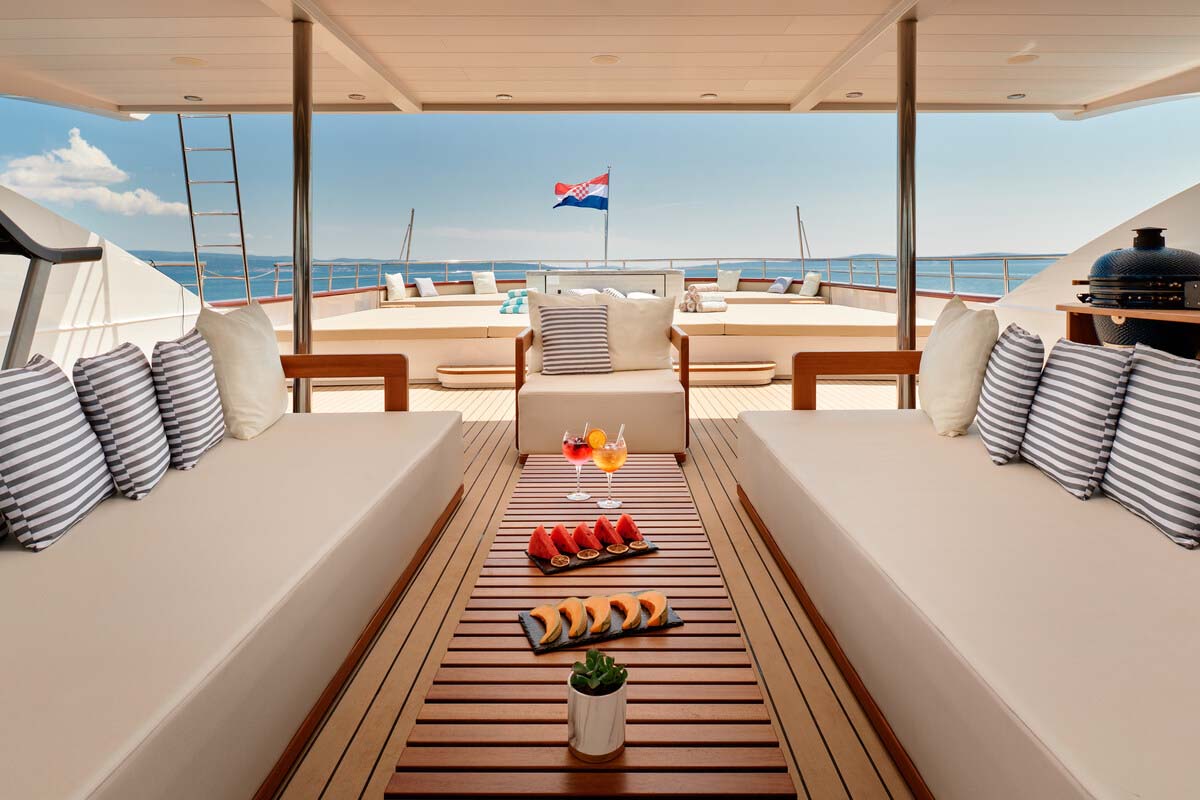
We sailed through the afternoon to the island of Vis arriving into the horseshoe bay just as evening came, and the air cooled and the light became soft, turning the pale rock used to build the town into a blaze of gold. I strolled along the harbor, thick with masts, listening to the birdsongs of goldfinch, linnet and Eurasian sisken. The view out over the port from the baroque Church of St. Spirit was fine; what was great was sitting at the doorway and listening to the half-dozen babas within singing, and smelling the bubble gum of two young girls who whispered harshly to each other at the threshold until they were shooed away.
Vis was full of children and music. Children played a game of soccer down a side alley, minded little stands selling painted rocks, and fished off a narrow wooden pier. A young woman sat on the seawall doing needlepoint and listening to tamburica folk songs. A woman on the street sat with a display of music boxes for sale. I turned one crank and heard “O Sole Mio,” another was the Beatles “In My Life.”
Croatia has many saints, and a few I might have chosen that would have fit one of my past lives. There was Saint Jerome, patron of translators, and Saint Marinus the protector of bachelors. Aloysius Stepinac attends to students and farmers. But on this weekend cruise, I preferred Saint Vitus, the patron saint of sleeping in. When I awoke the next morning, we were already underway, and the island of Hvar appeared over my morning coffee and yogurt.
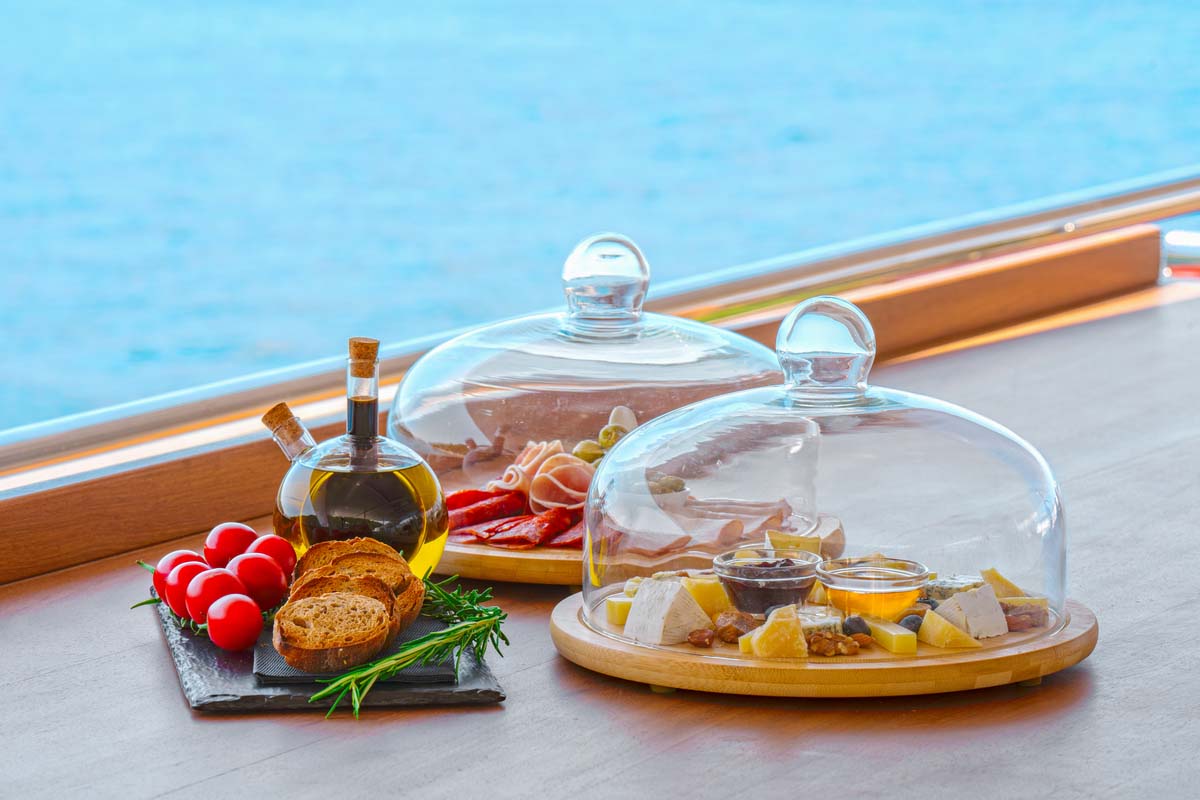
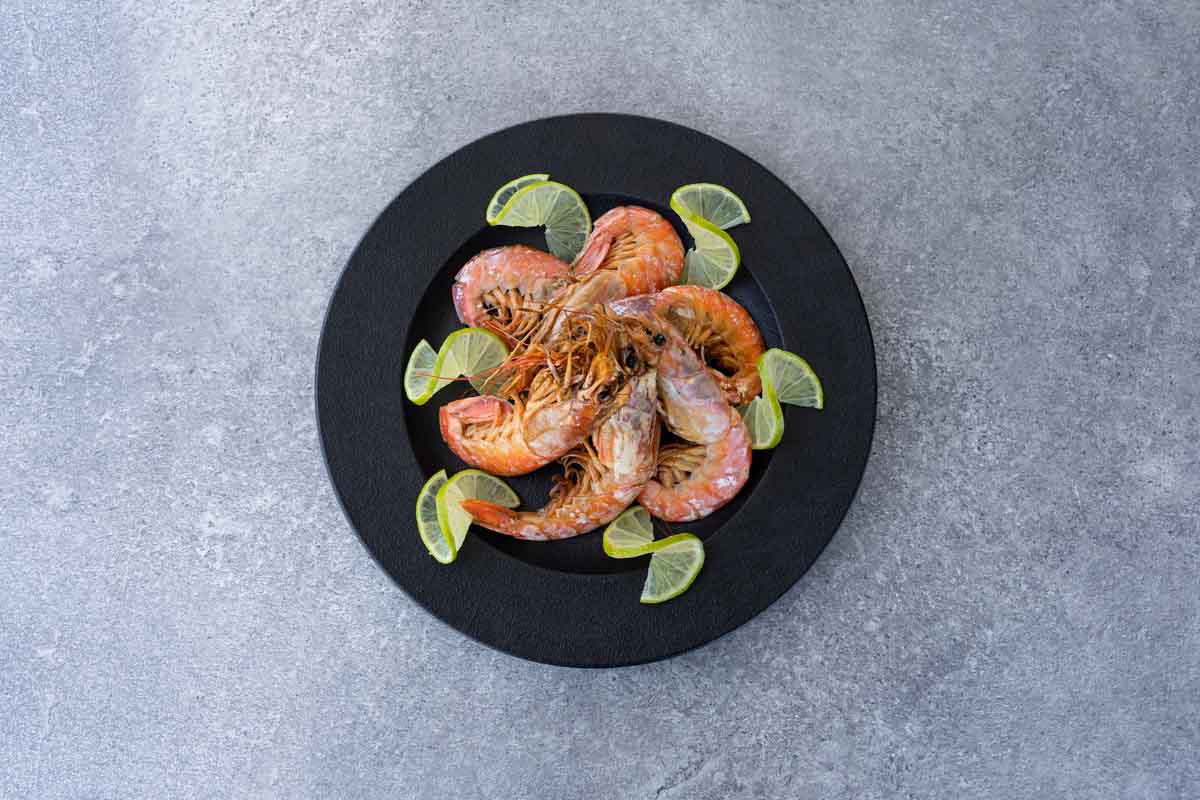
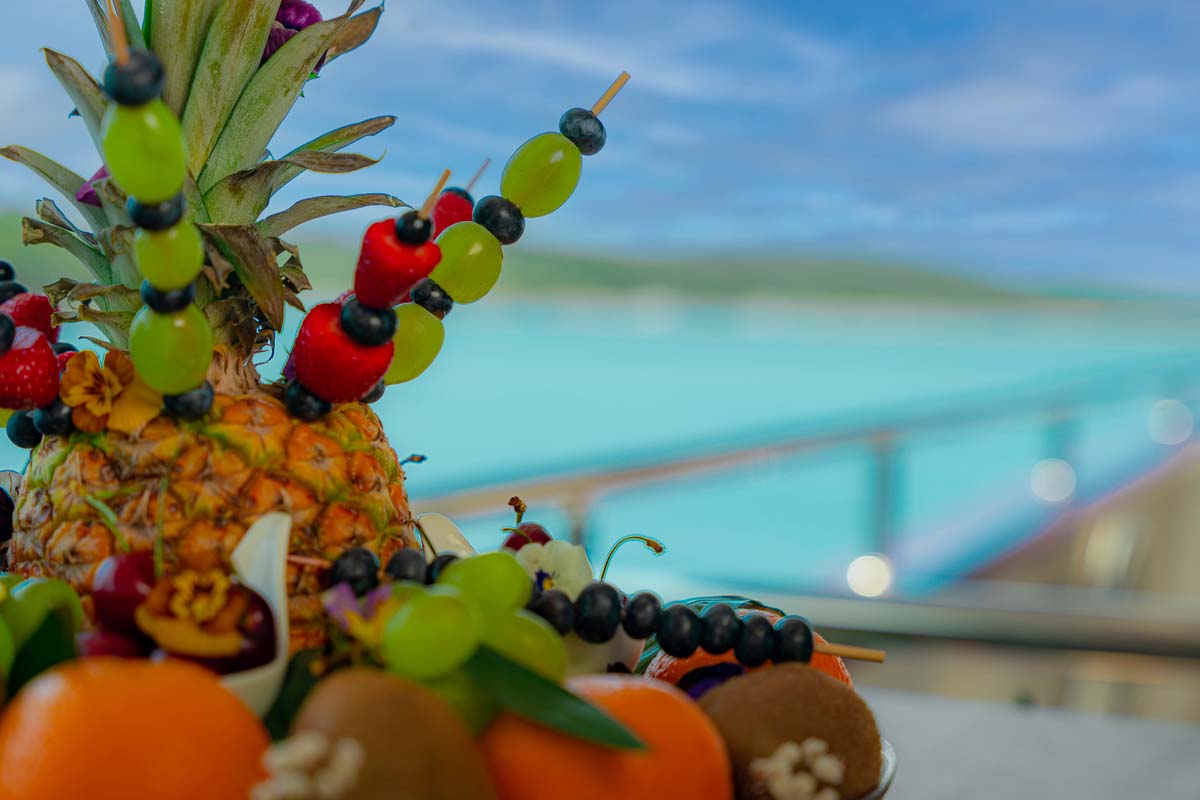
The Dalmatian Coast was once the domain of the Republic of Venice. Like Brač and Vis, Hvar was styled in the Venetian way—angular high, rectangular spires, archways and warehouses that spoke of some long-ago industriousness. Hvar town is given over to leisure now, the restaurants spilling onto the sunny cobbled streets, and happy crowds, their faces furrowed by the sun, climbing up to the curvy Fortica Fortress, and browsing the market stalls selling bags of lavender and filigreed gold jewelry.
Ohana was anchored in a protected inlet, the water so clear, the seafloor was visible even from the top deck. The ship had a plethora of toys—an inflatable kayak, a paddleboard, a sea-bob, a self-propelling surfboard—but I chose the Sea-Doo, small and versatile, something to give me speed and distance. I rode away from the ship, stopping before ducking behind an island, to turn about-face. There was Ohana, sleek and clean, and almost camouflaged against the island; its blue hull, brown trim, and white decks blended against the water, the flotsam, and the rock of the island.
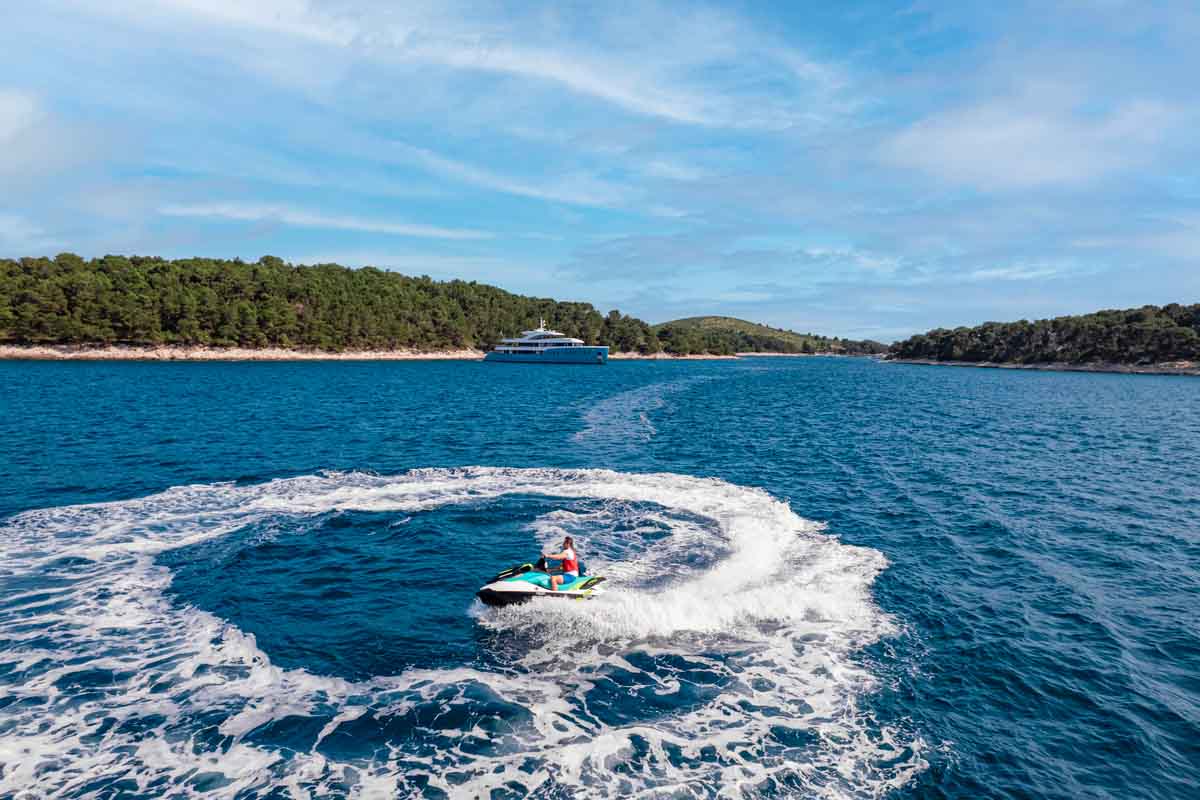
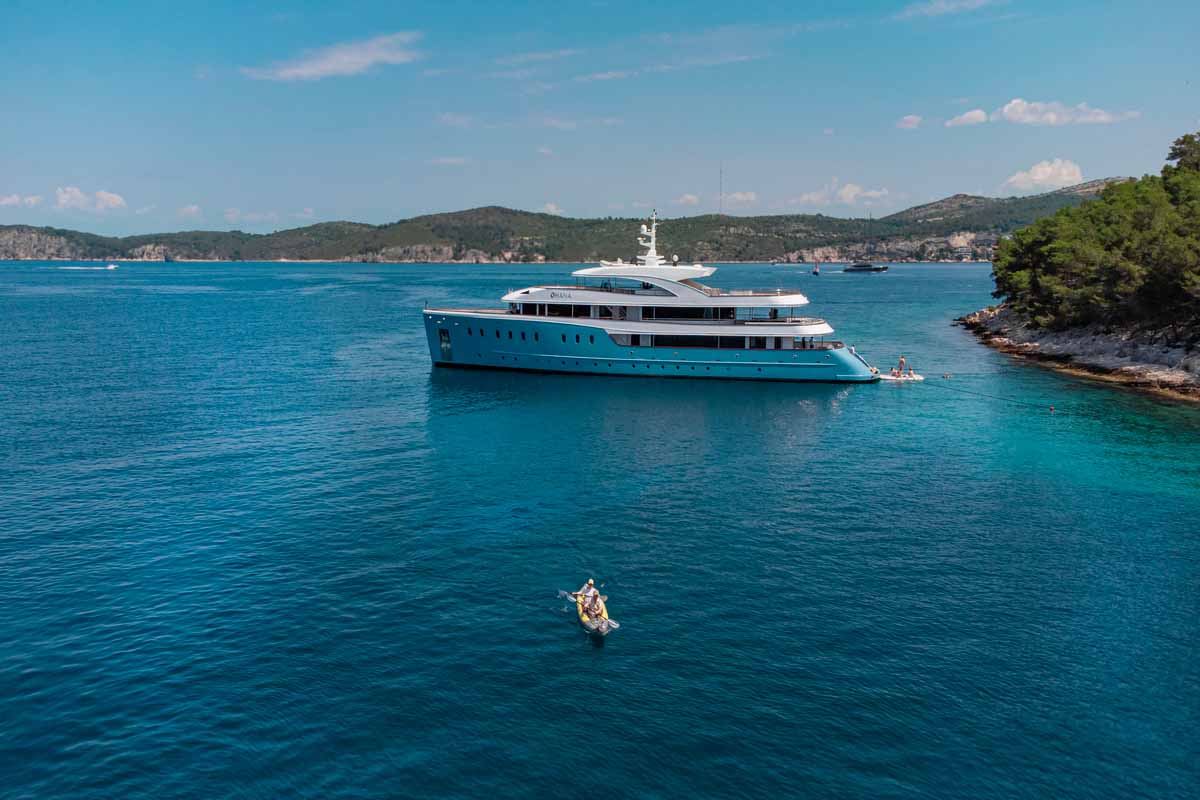
I drove on, beyond the islands, toward the greater Adriatic. The water was continually new, inventing itself below me. Sometimes I was against the current, sometimes with it; sometimes ahead of the waves, sometimes behind. In places, the water was still, in others rippled or mottled. I felt as though I were not five feet above it, but one thousand. Finally, I stopped, the only sound the clop of water against my machine. The endless sea was ahead of me—the domain of St. Vitus, with no one, nowhere, to tell me what to do.
A week-long charter of Ohana for up to 30 guests costs between 90,000 – 120,000 Euros.

